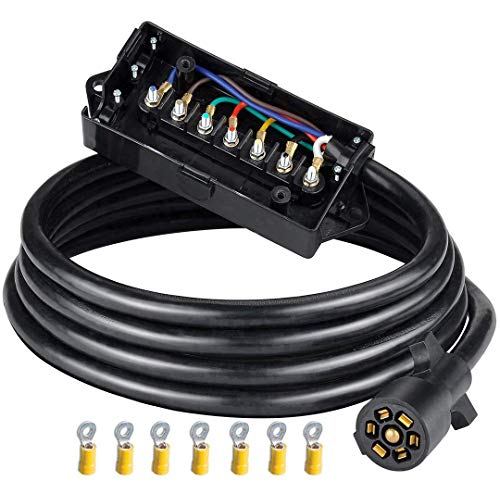
The pin should read 12v+ when the corresponding light is activated from the truck. With a digital multimeter set to the proper range to read ~12v+ (or using a test light), probe the appropriate pin and a good ground (clean area on the frame, bumper, etc).have someone depress the brake pedal, activate the turn signal, etc. Have a helper operate the light(s) that are not working, i.e.Disconnect the trailer connector from the truck.If the connector has no ground, the ground wire has been cut, disconnected, corroded, etc find and repair as necessary.ĭetermine whether the problem is with the truck or the trailer.If the connector has a good ground, this is not the problem.Using a digital multimeter, check for continuity between the truck's ground pin and the chassis (probe the ground pin of the connector and a clean spot on the frame/bumper).If no lights are working, check the ground at the truck connector If this does not remedy the problem, continue to step 4. Replace the bulb or light assembly, the most likely problem is that the bulb has burnt out.A shot of WD-40 or dielectric lubricant into each of the connectors may help clear and clean the connectors. Clean any dirt or debris from both connectors and ensure that the trailer connector is inserted completely into the truck connector.(Print the video notes for future reference.Check the connection between the truck and trailer (Print this guide and save for future reference.) So if you step on the brakes and all the trailer lights go out, then you need to ground your trailer to your truck with the ground wire. If your brake lights work, or your marker lights work, but nothing works when you turn on both at the same time, your trailer is not grounded to the truck. You may think the rubber caps protect the plug, but they tend to hold the water in. That is the green stuff that forms when oxygen from the air or water comes in contact with copper. A thin coat of grease will help prevent copper oxide from building up. The ground wire should be large enough to handle the entire load do not depend on grounding through the ball. Make sure your ground wire, which is typically white, is securely attached to the frame on both the truck and trailer side. Keep in mind that it isn’t always as simple as matching the colors like you might be inclined to do. Having the wires backward will cause problems. When referencing the 7-Way RV Plug diagram, make sure you are looking at the plug the way the diagram is showing you.
#TRAILER CONNECTOR DOWNLOAD#
Download the guide below, print it and keep it in your toolbox for future reference. We are going to do our best to simplify that, mainly with a good, color coded diagram. If you’ve ever looked at a 7-Way RV Trailer Connector, you have probably stood there scratching your head in confusion. With all the abuse and day-to-day wear and tear, you may find yourself repairing or replacing one sooner or later. Here at AJ’s, we are all too familiar with the accidents people have with the plugs: forgetting to unplug and pulling away, dragging it on the ground. It is usually used for towing heavy-duty cargo trailers, aluminum trailers, dump trailers, utility / landscape trailers, equipment trailers, open car haulers and enclosed car haulers. The 7-Way Trailer Plug is around 2″ diameter connector that allows an additional pin for an auxiliary 12-volt power or backup lights.

Trailers with electric brakes need them too.

Most new vehicles equipped with a tow package have connectors. It’s the dreaded 7-Way Trailer & RV plug that we all have come to know and love.


 0 kommentar(er)
0 kommentar(er)
